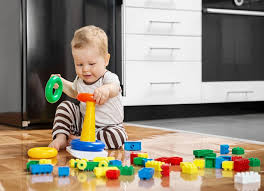
Color Matters: Why We Use Soft Tones in Kids’ Toys
Share
Have you ever noticed how calm your child becomes in a softly lit, pastel-colored room? It’s not just a coincidence. Color plays a powerful role in shaping how children feel, think, and learn. At Tiny Joy, we carefully choose soft tones—like sky blue, beige, light yellow, and pastel pink—for a reason.
In this post, we’ll explore why soft colors matter in kids’ toys—and how they can support your child’s emotional and cognitive development.
The Impact of Color on Young Minds
Children experience the world through their senses, and color is one of the first things they respond to. While bright, high-contrast toys may grab attention, research shows they can also lead to overstimulation, especially in younger children.
Overexposure to loud colors can cause :
-
Restlessness or irritability
-
Difficulty focusing
-
Shorter attention spans
On the other hand, soft and muted colors help create a soothing environment. They support:
-
Emotional regulation
-
Calm, focused play
-
Creative, open-ended thinking
In short, color directly affects how your child feels—and how well they learn.
Why Tiny Joy Uses Soft Tones
At Tiny Joy, we believe that toy design should do more than look pretty—it should nurture a child’s mind. That’s why we intentionally choose warm, calming shades in every product we make.
🎨 Our Signature Palette Includes:
-
Sky Blue: Encourages relaxation and trust
-
Beige & Cream: Offers warmth and grounding
-
Pastel Yellow: Boosts joy without overstimulating
-
Soft Pink: Promotes empathy and emotional comfort
This subtle color approach helps create a peaceful play space where children can concentrate, explore, and grow at their own pace.
The Educational Power of Calm Design
Soft tones aren’t just about aesthetics—they’re a tool for early development. Calmer colors make it easier for kids to:
-
Focus on shape, texture, and movement
-
Engage in longer periods of play
-
Feel safe and emotionally balanced
This is especially important during foundational years, when brain growth and emotional patterns are rapidly forming.
By reducing visual clutter, soft-toned toys support intentional, mindful play—exactly what young brains need.
Final Thoughts: Calm Colors, Confident Kids
In a world full of noise and distractions, a gentle color palette can make a big difference. At Tiny Joy, we use soft tones not just for beauty, but to help your child feel safe, focused, and free to imagine.
Because when play feels peaceful, learning comes naturally.
